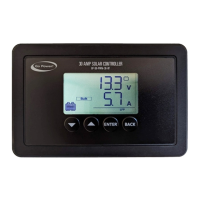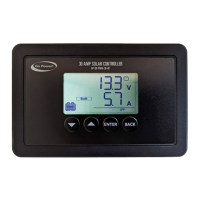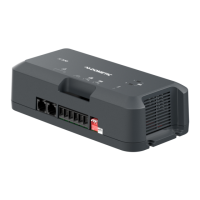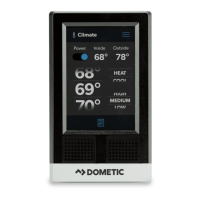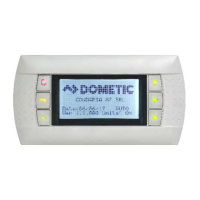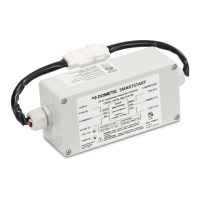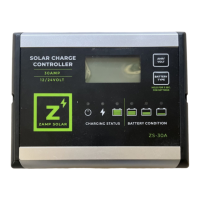[page 6] | gpelectric.com
2. WARNINGS
Disconnect all power sources
Electricity can be very dangerous. Installation should be performed only
byalicensedelectricianorqualiedpersonnel.
Battery and wiring safety
Observe all safety precautions of the battery manufacturer when handling
or working around batteries. When charging, batteries produce hydrogen
gas, which is highly explosive.
Wiring connections
Ensure all connections are tight and secure. Loose connections may generate
sparks and heat. Be sure to check connections one week after installation to
ensure they are still tight.
Work safely
Wear protective eye wear and appropriate clothing during installation.
Use extreme caution when working with electricity and when handling
and working around batteries. Use properly insulated tools only.
Observe correct polarity
at all times
Reverse polarity of the battery terminals will cause the controller to give
a warning tone. Reverse connection of the array will not cause an alarm
but the controller will not function. Failure to correct this fault could
damage the controller.
Do not exceed the GP-PWM-
30-SB Amp current and max
voltage ratings
Do not exceed the GP-PWM-
30-SB max voltage ratings
The maximum current of the solar system is the sum of parallel-connected
PV module–rated short circuit Currents (Isc) multiplied by 1.25. The result
-
ing system current is not to exceed 37.5A. If your solar system exceeds
this value, contact your dealer for a suitable controller alternative.
The maximum voltage of the array is the sum of the PV module–rated open-circuit
voltage of the series connected modules multiplied by 1.25 (or by a value from
NEC 690.7 provided in Table 690.7 A). The resulting voltage is not to exceed
35V. If your solar system exceeds this value, contact your dealer for a suitable
controller alternative.
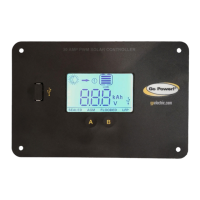
